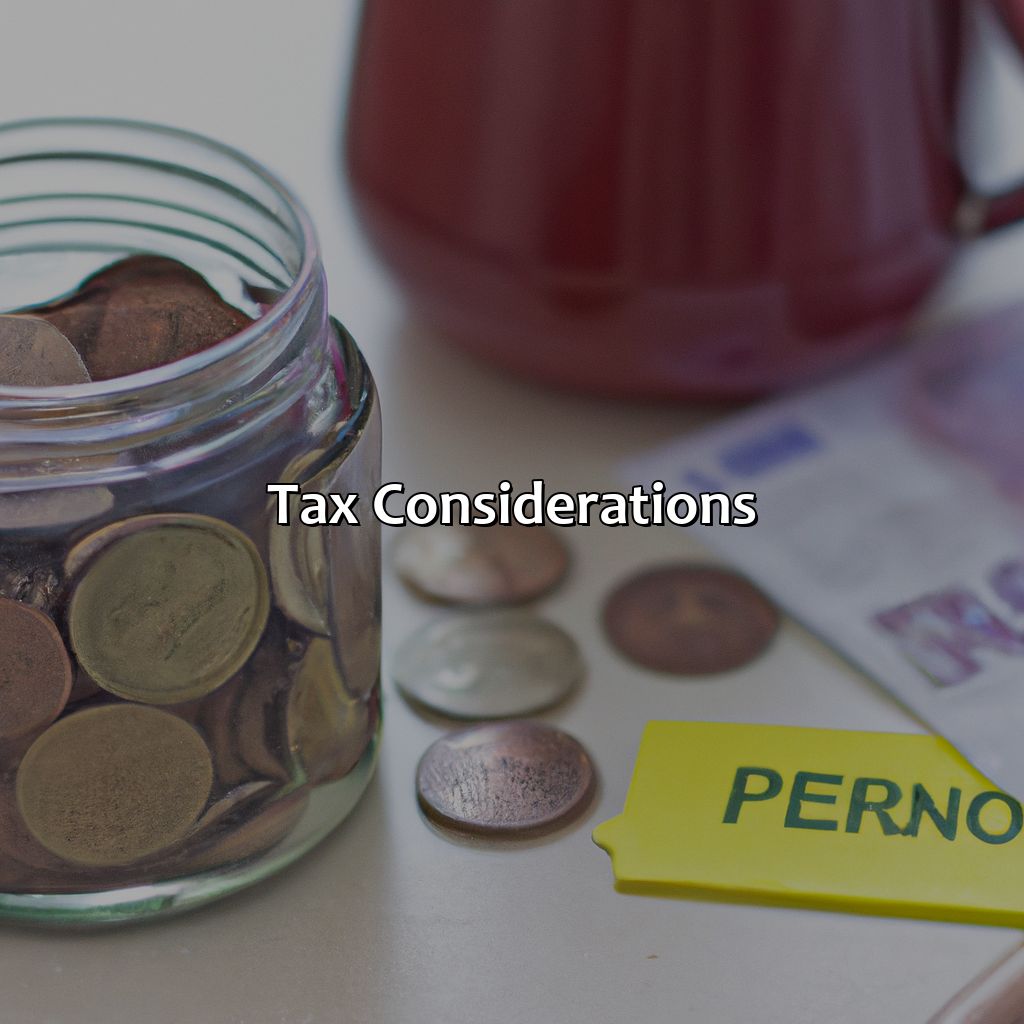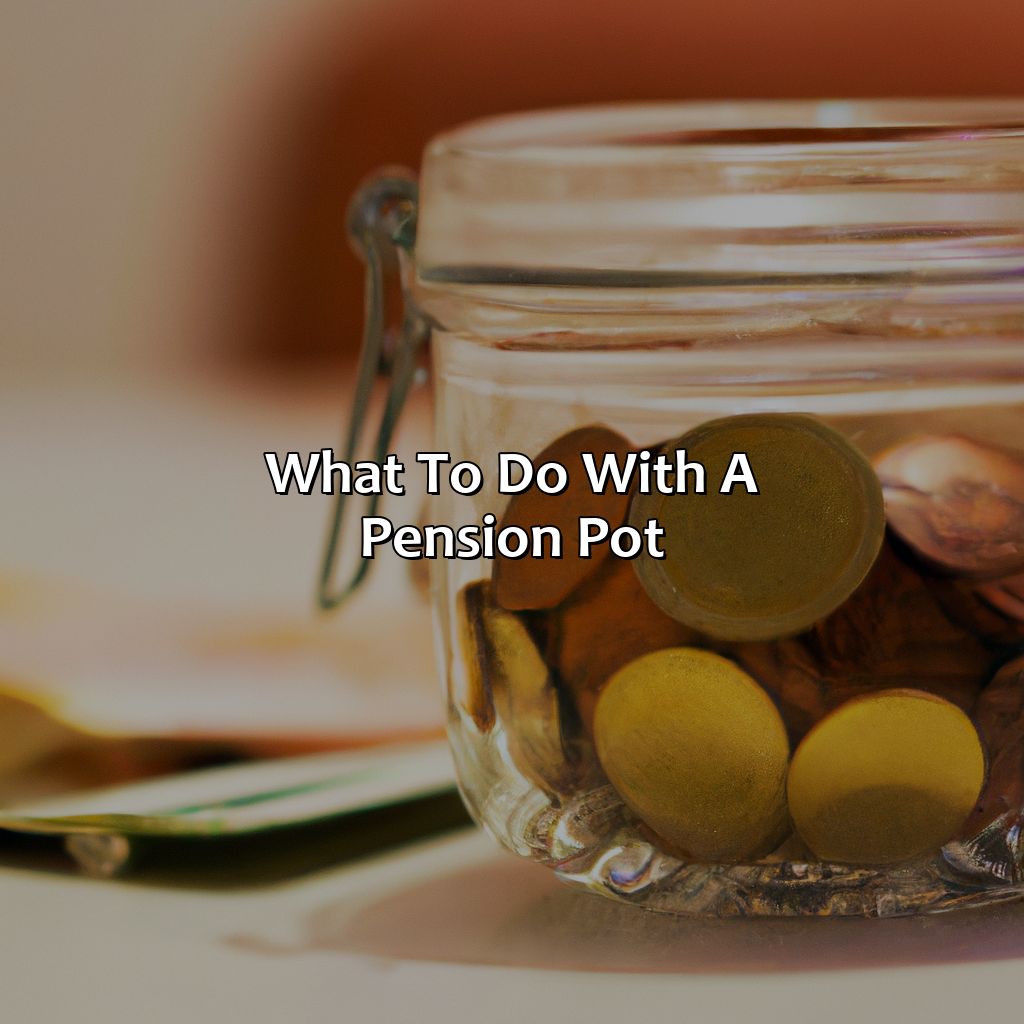What To Do With A Pension Pot?
Key Takeaway:
- When considering what to do with your pension pot, take the time to weigh your options carefully and seek professional advice to ensure you make the best decision for your individual circumstances.
- The different options available include taking a lump sum withdrawal, purchasing an annuity, opting for income drawdown, or utilizing a hybrid approach. Each option has its own advantages and disadvantages, so it’s important to research and understand these before making a decision.
- It’s also important to consider the tax implications of each option. While there may be a tax-free cash allowance available, it’s crucial to understand how withdrawals will be taxed and plan accordingly. Finally, investing your pension pot using diversification, money market funds, and managed fund options can help maximize your returns and secure your future retirement income.
Struggling to know what to do with your pension pot? You’re not alone. With many options available, it can be hard to decide which will best suit your needs. In this article, you’ll learn the steps to take to make the most of your pension pot.
Options for Pension Pot
After reaching retirement age, one is left with a Pension Pot that can be used to fund their lifestyle during retirement.
The following are some options to consider when deciding how to use the Pension Pot:
- Option 1: An annuity – through which the Pension Pot can be converted into a regular income stream for life
- Option 2: Drawdown – allows individuals to take out money from the Pension Pot as and when required, while the remaining balance continues to grow
- Option 3: Cash withdrawal – provides a portion of the Pension Pot as a lump sum
- Option 4: Mix and match – use a combination of annuity and drawdown
- Option 5: Leave the Pension Pot untouched – the Pension Pot continues to grow until the individual decides to withdraw it or pass it on to beneficiaries
It is essential to weigh the pros and cons of each option before making a decision. Seeking expert advice and considering an individual’s circumstances, health, and life expectancy can contribute to a good decision.
\n
Have you been wondering how much pension pot do you need? We can help you out with that question. Just visit our website to know in detail.
Mr. John opted for an annuity without exploring other options. Sadly, he passed away a few years after his retirement, leaving no funds for his spouse. Thus, it is essential to make an informed decision after considering multiple options and consulting professionals.

Image credits: retiregenz.com by Joel Duncun
Tax Considerations
When planning for retirement, it is essential to consider the tax implications of your pension pot. Various tax considerations come into play, such as income tax, inheritance tax, and capital gains tax, depending on how you decide to use your pension pot.
If you decide to take the entire pension pot as cash, the first 25% is tax-free, and the rest is subject to income tax. Alternatively, if you choose an annuity, the tax is based on the income you receive. Inheritance tax may also be a consideration if you plan to leave your pension pot as inheritance.
It is essential to note that different tax considerations may apply to different types of pensions, such as defined benefit versus defined contribution. Professional financial advice can help you navigate these complexities and ensure you make informed decisions.
Considerations aside, some suggestions on how to minimize tax include spreading withdrawals over several tax years to avoid being pushed into higher tax brackets. Another option is to contribute more to your pension pot earlier on in your career, taking advantage of tax relief and compounding interest.
Overall, carefully considering tax implications is a crucial step in making informed decisions about your pension pot and your retirement plan. A professional financial advisor can provide personalized, appropriate guidance to help minimize tax obligations and maximize retirement benefits.

Image credits: retiregenz.com by Adam Arnold
Investment Strategies
In order to make the most out of your retirement savings, it is important to have a well-planned investment strategy. This involves carefully considering your options with regards to where to invest your pension pot. One approach is to diversify your investments across different asset classes such as equities, bonds, and property, to balance risk and return. Another strategy is to take advantage of tax-free savings accounts such as ISAs, which offer greater flexibility and control over your investments.
When developing your investment strategy, it is also important to consider your personal circumstances, including your age, risk tolerance, and financial goals. For example, if you are close to retirement age, you may want to adopt a more conservative investment approach to protect your pension pot from market volatility. On the other hand, if you have a higher risk tolerance and a longer time horizon, you may consider investing in higher-risk assets with the potential for greater returns in the long run.
Additionally, it can be helpful to seek professional advice from a financial planner or advisor who can provide tailored guidance based on your individual situation and goals. By taking a proactive approach to managing your pension pot, you can maximize your savings and ensure a comfortable retirement.
A friend of mine who retired recently failed to adequately plan his investment strategy and ended up losing a significant portion of his pension pot in a market downturn. This experience underscores the importance of thoughtful planning and a diversified investment approach to protect against market volatility and ensure long-term financial security.

Image credits: retiregenz.com by David Arnold
Five Facts About What To Do With A Pension Pot:
You can choose to take a tax-free lump sum of up to 25% of your pension pot. (Source: Money Advice Service)
You can choose to use your pension pot to buy an annuity, which will provide a regular income for life. (Source: Pension Wise)
You can choose to take a flexible income from your pension pot through drawdown. (Source: Citizens Advice)
You can choose to take a combination of lump sum and regular income options. (Source: The Pensions Advisory Service)
You should consider seeking professional financial advice before making any decisions about what to do with your pension pot. (Source: Which?)
FAQs about What To Do With A Pension Pot?
What are my options for what to do with a pension pot?
There are several options to consider when deciding what to do with your pension pot, including leaving it with your current provider, transferring it to a new scheme, using it to buy an annuity, taking a lump sum, or choosing a flexible income drawdown option.
How do I decide which option is best for my pension pot?
The best option for your pension pot will depend on several factors, including your financial needs and goals, your age and health, the size of your pension pot, and your attitude to risk. It’s a good idea to speak to a financial advisor who can help you weigh up your options and make an informed decision.
What are the pros and cons of each option for my pension pot?
Each option for your pension pot has its own advantages and disadvantages. For example, leaving your pension pot with your current provider may be convenient, but it may not offer the best returns. Transferring to a new scheme may offer better investment opportunities, but there may be high fees involved. Choose wisely and always do your research.
Is it possible to combine multiple pension pots?
Yes, it is possible to combine multiple pension pots into one, which can make it easier to manage your retirement funds. You can do this by transferring your pension pots into a single scheme, or using a pension consolidation service.
What should I do if I’m not sure what to do with my pension pot?
If you’re not sure what to do with your pension pot, or you’re feeling overwhelmed by the options, it’s a good idea to speak to a financial advisor. They can help you assess your needs and goals, and guide you towards the best option for your retirement funds.
What are the tax implications of my options for what to do with a pension pot?
The tax implications of your pension pot will depend on the option you choose. For example, if you take a lump sum, you may be subject to income tax on the amount you withdraw. If you choose a flexible income drawdown option, you may be subject to income tax on the withdrawals you make. It’s important to understand the tax implications of your choices, and seek professional advice if necessary.
 Checkout this IRS Loophole
Checkout this IRS Loophole 
